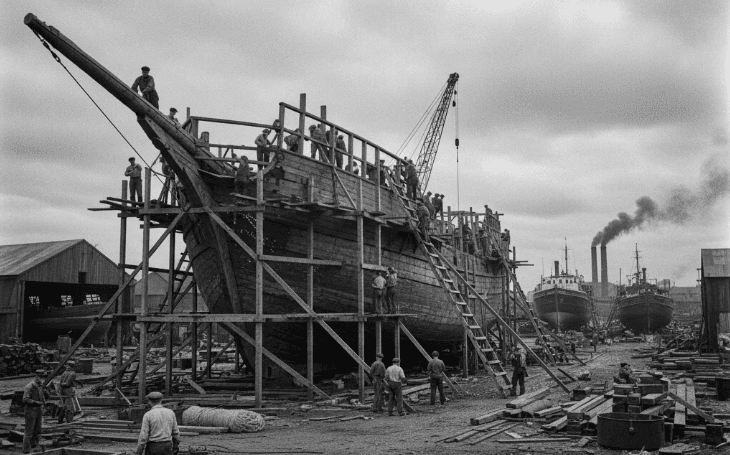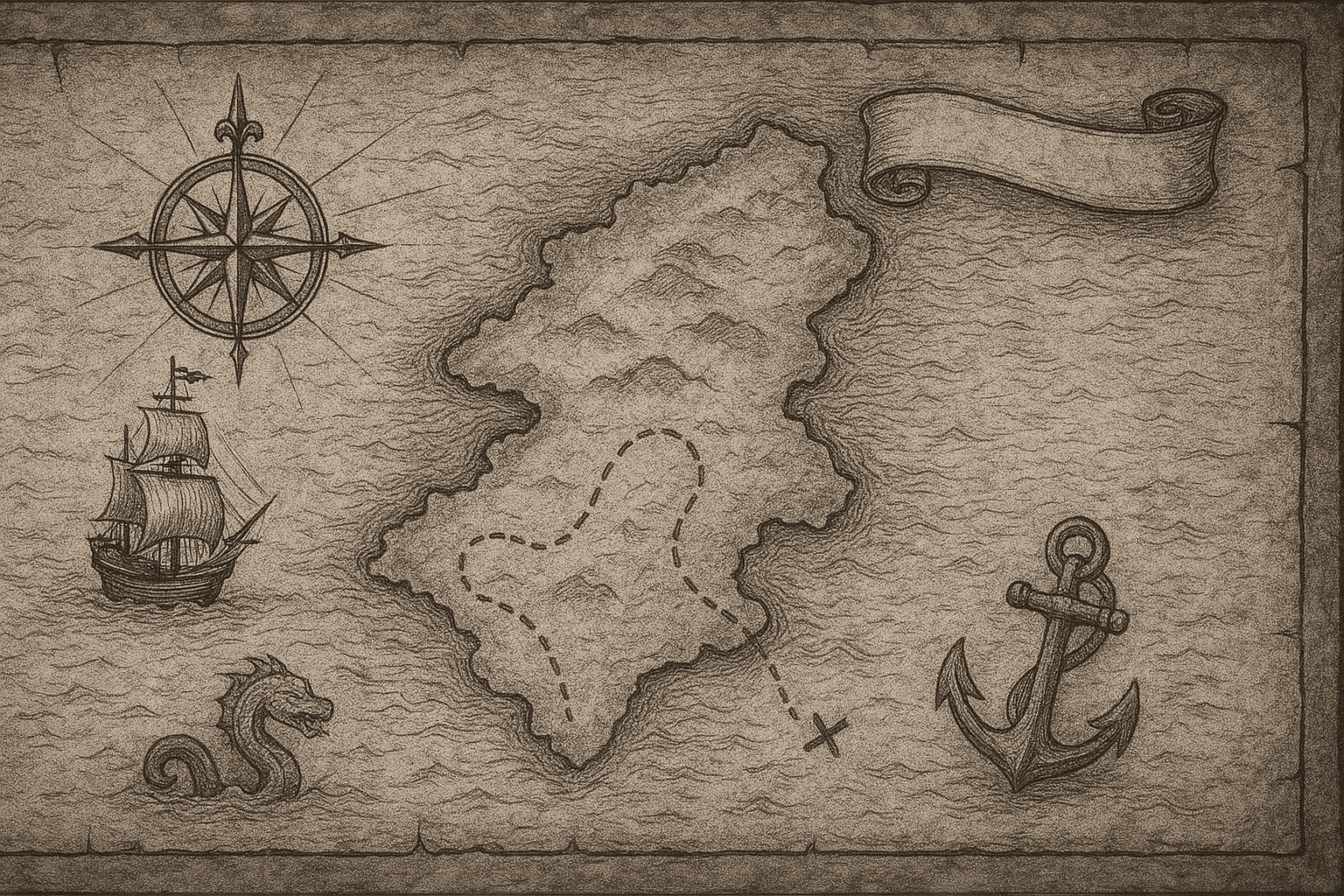The digital ocean is vast, powerful, but increasingly treacherous to navigate. We, the builders, the captains and deckhands of modern infrastructure, find ourselves adrift in a sea of complexity. One moment we're patching hulls against security waves, the next we're wrestling kraken-like APIs from a dozen different shores – AWS, Vercel, GridPane, self-hosted docks. Each requires a different map, a different language, a different set of tools just to stay afloat.
The Problem: Drowning in Complexity
We're drowning in browser tabs, losing our bearings to constant context switching. We saw the biggest flagships take on water during the October 2025 AWS outage – proving that even reliance on a single, massive vessel offers no true guarantee of safe passage. When you sail under another's flag entirely, are you truly the captain of your voyage?
The Current State of Infrastructure Management
- Fragmented Tools: Each cloud provider requires different interfaces and APIs
- Context Switching: Constant jumping between dashboards and management tools
- Vendor Lock-in: Heavy reliance on single providers creates risk, as demonstrated by the October 2025 AWS outage analysis
- Security Complexity: Managing access and permissions across multiple platforms
- Cost Management: Difficulty tracking and optimizing costs across providers
- Complete transparency in development
- Community-driven innovation
- No vendor lock-in or hidden costs
- Full control over your infrastructure
- IAAS Cloud Providers: AWS, Google Cloud, Azure, DigitalOcean
- Hosting Platforms: Vercel, Netlify, Railway
- Server Management: GridPane, Runcloud
- Self-Hosted: Docker, Kubernetes, bare metal servers
- Dashboard customization through shadcn UI registries
- Role-based view configurations
- Real-time monitoring widgets
- Custom alerting and notifications
- Single sign-on across all services
- Centralized deployment management
- Unified monitoring and alerting
- Unlimited RBAC users with granular permissions
- Complete data sovereignty
- Custom security configurations
- No external dependencies
- Full control over updates and maintenance
- Core architecture design
- Initial adapter framework
- UI component library development
- Security and authentication system
- Multi-cloud integration testing
- Reclaiming Control: Take back ownership of your infrastructure decisions
- Enabling Resilience: Build systems that can weather any storm
- Empowering Builders: Give developers the tools they need to succeed
- Navigating with Confidence: Face the digital ocean knowing you have the right vessel
- Star our GitHub repository to stay updated
- The Docks Registry: One Port to Connect Them All - Universal adapters for cloud providers
- Manage many ships from a evolving map: The StackDock UI Philosophy - Customizable dashboard philosophy
The Solution: A Multi-Cloud Management System (MCMS)
Remember the days before WordPress? Content management was a chaotic archipelago of custom scripts, FTP uploads, and static HTML files. Then, a unified Content Management System (CMS) arrived, providing a single harbor, a common set of tools, and democratizing creation for millions. It didn't just simplify; it fundamentally changed the game.
We believe infrastructure management is crying out for its own revolution. It needs its own unified system – what we envision as a true Multi-Cloud Management System (MCMS). Not just another dashboard, but a fundamental shift in how we command our digital fleets.
Introducing StackDock: The Shipwright's Vision
This is the vision we're charting with StackDock. We're not just building another tool; we're crafting a new kind of vessel – a resilient, adaptable ship built by and for the captains navigating today's complex multi-cloud ocean.
Core Principles
Our compass is set by core principles, the foundational timbers of our design:
1. Free & Open Source (FOSS)
The charts, the tools, the ship itself – built transparently, owned by the community. StackDock is and always will be fundamentally FOSS. Trust is forged in the open.
Benefits:
2. The Docks Registry (Adapters)
A ship needs to dock at many ports. Our modular Adapters system acts as universal docking clamps, designed to connect seamlessly to diverse providers and services, bringing them all into one harbor view. Learn more about our universal adapter system that solves the multi-cloud compatibility nightmare.
Planned Provider Support:
3. The UI Registry
Your ship, your map room. StackDock aims for a customizable UI where you can arrange the instruments and views you need, focusing on the critical data without unnecessary clutter.
Planned Features:
4. Unified Command & Control
One bridge, one helm. StackDock aims to provide one interface to dramatically reduce context switching, manage deployments, monitor health, and secure access across your entire fleet.
Planned Capabilities:
5. Your Harbor, Your Rules
True captains need sovereignty. StackDock is designed to be self-hostable, putting you in ultimate control of your command center.
Self-Hosting Benefits:
The Voyage Ahead: Pre-Alpha Development
Let's be clear: StackDock is currently in the shipyard, its keel just laid. We're in pre-alpha, hammering out the core structure, fueled by the conviction that this vessel must be built.
Our Development Approach
We're sharing every step, every challenge, every blueprint #BuildInPublic. The seas ahead are uncharted, the work immense, but the need is undeniable.
Current Status:
What This Means for You
This isn't just about managing servers; it's about:
Join the Journey
The digital ocean awaits, and we need skilled sailors to help chart the course. Whether you're a seasoned captain or a fresh deckhand, there's a place for you in the StackDock community.
How to Get Involved
1. Follow Our Progress: Watch our development unfold in real-time
2. Share Feedback: Your experience shapes our direction
3. Spread the Word: Help other captains discover StackDock
Please
Related Reading
The seas ahead are uncharted, but together we can build ships designed to withstand storms the giants might ignore. Welcome aboard, captain.


